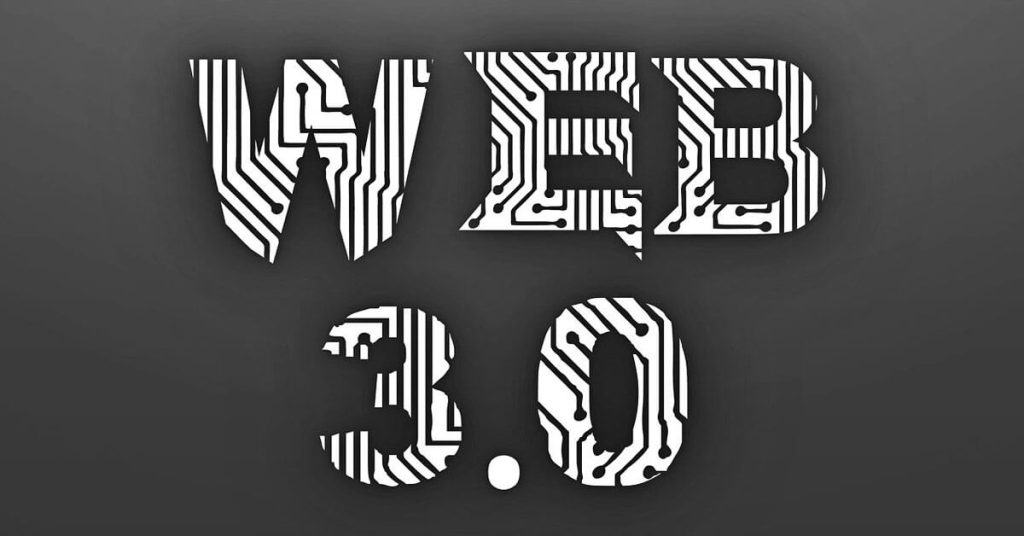Zama is an innovative project in the blockchain space focused on privacy and confidentiality through advanced cryptographic technology.
It aims to revolutionize how blockchain applications handle sensitive data by enabling confidential smart contracts using Fully Homomorphic Encryption (FHE).
What Is Zama Crypto?
Zama Crypto is an open-source cryptography company that develops state-of-the-art FHE solutions for blockchain and AI applications.
Unlike traditional encryption, FHE allows computations to be performed directly on encrypted data without ever decrypting it.
This means smart contracts on Zama can process private inputs—like balances, orders, or identities—while keeping them fully encrypted and confidential.
The Zama Crypto Protocol is a confidential blockchain layer that can be deployed on top of any Layer 1 (L1) or Layer 2 (L2) blockchain, such as Ethereum or Solana, without requiring users to move assets to a new chain.
This preserves user privacy end-to-end, even from node operators, while maintaining composability with other smart contracts and decentralized apps (dApps).
Zama Crypto Technical Highlights
Fully Homomorphic Encryption (FHE): Enables encrypted computation on any data, making smart contracts private by default.
fhEVM (Fully Homomorphic Ethereum Virtual Machine): A variant of the EVM where every variable can be encrypted and computed without decryption.
Multi-Party Computation (MPC): Decentralizes key management to prevent any single party from accessing private data.
Zero-Knowledge Proofs (ZK): Ensures encrypted inputs are correctly formed without revealing the data.
Cross-Chain Compatibility: Works as a layer on existing blockchains, allowing users to interact with confidential dApps without bridging assets.
Post-Quantum Security: Zama’s encryption is resistant to quantum computer attacks, future-proofing privacy.
How does Zama’s Fully Homomorphic Encryption enable privacy on blockchain?
Zama’s Fully Homomorphic Encryption (FHE) technology enables privacy on blockchain by allowing computations to be performed directly on encrypted data without ever decrypting it.
This means that all transaction inputs, states, and smart contract operations remain encrypted end-to-end, ensuring that no sensitive information is exposed—not even to node operators or validators on the network.
Encrypted Computation:
Unlike traditional encryption that requires data to be decrypted before processing (exposing it during computation), FHE keeps data encrypted throughout the entire process.
Smart contracts running on Zama’s protocol can execute logic on encrypted inputs and produce encrypted outputs, preserving confidentiality at all times.
End-to-End Encryption:
Data remains encrypted during transit, storage, and computation, providing true end-to-end privacy.
This prevents any third party—whether service providers, blockchain nodes, or hackers—from accessing users’ private data while still enabling the blockchain to verify transaction correctness publicly.
Public Verifiability Without Data Exposure:
Zama’s protocol leverages FHE alongside zero-knowledge proofs (ZK) to allow anyone to verify that encrypted computations were done correctly without revealing the underlying data.
This solves the classic blockchain privacy dilemma where transparency usually conflicts with confidentiality.
Programmable Confidentiality:
Developers can define who has access to decrypted outputs, enabling flexible privacy controls ranging from full anonymity to selective disclosure for regulators or service providers.
This is critical for use cases like confidential finance, identity verification, and governance.
Cross-Chain Compatibility:
Zama’s confidential layer sits on top of existing blockchains (Ethereum, Solana, etc.), allowing users to interact with confidential smart contracts without moving assets to a new chain.
This preserves composability and ecosystem interoperability while adding privacy.
Post-Quantum Security:
The FHE schemes Zama Crypto uses are based on lattice cryptography, which is resistant to quantum computer attacks, ensuring long-term security of encrypted data.
Practical Implications
Confidential DeFi: Private stablecoin payments, encrypted lending, and hidden trades become possible without revealing user balances or transaction details on-chain.
Private Voting and Auctions: Zama’s FHE enables on-chain blind auctions and secret ballots where bids or votes remain encrypted during processing, ensuring privacy and fairness without off-chain data exposure.
Secure On-Chain Gaming: Game states and inputs can be encrypted, allowing private gameplay on public blockchains without revealing sensitive information or risking tampering.
How can I start building with Zama’s technology using Solidity or Python?
To start building with Zama’s technology using Solidity or Python, you can leverage their Fully Homomorphic Encryption (FHE) framework designed for confidential smart contracts and privacy-preserving machine learning.
Building with Solidity (FHEVM)
Zama Crypto provides FHEVM, a full-stack framework that extends the Ethereum Virtual Machine (EVM) to enable confidential smart contracts operating on encrypted data.
How to get started:
Quick Start Tutorial:
In about 30 minutes, you can go from writing a simple Solidity contract to converting it into an FHEVM-compatible confidential contract and testing it locally.
This involves setting up your development environment with tools like Hardhat (a popular Ethereum dev environment), writing your contract, and deploying it on the Zama testnet.
Development Environment:
Use Hardhat with the FHEVM Hardhat template, which simplifies compiling, deploying, and testing confidential contracts.
Documentation and Guides:
Zama Crypto offers detailed Solidity guides covering encrypted data types, supported operations, access control, and decryption flows to help you write fully confidential smart contracts.
Developer Program:
Join Zama’s Developer Program on Guild.xyz to access step-by-step learning levels, live support from Zama engineers, private workshops, and mentorship.
The program guides you from beginner to deploying real confidential contracts on the Zama Crypto public testnet.
Open-Source Code:
The FHEVM GitHub repository contains smart contract templates, Rust-based coprocessors for FHE operations, and tools for key management and deployment.
Building with Python (Concrete ML)
For Python developers, especially those working in machine learning, Zama Crypto offers Concrete ML, an open-source Python library that simplifies integrating FHE into ML workflows.
Key features:
User-Friendly APIs:
Concrete ML mimics popular Python ML libraries like scikit-learn, PyTorch (via ONNX), and pandas, making it accessible for ML practitioners to build encrypted ML models without deep cryptography knowledge.
Use Cases: Enables privacy-preserving ML tasks such as encrypted inference and collaborative analytics while keeping data encrypted end-to-end.
Getting Started: You can explore Concrete ML documentation and tutorials to start building encrypted ML applications. The library supports classical ML models and deep learning workflows.
Open Source: Both the ML framework and FHE compiler are open-source, allowing you to experiment and build custom privacy-preserving applications.
How to Begin Right Now
For Solidity Developers:
Visit Zama’s Quick Start Tutorial to set up Hardhat and write your first confidential contract.
Join the Zama Developer Program to access workshops, mentorship, and testnet deployment.
Explore the FHEVM GitHub repository for code and examples.
For Python Developers:
Check out the Concrete ML documentation to install the library and explore tutorials.
Start building encrypted ML models using familiar Python APIs.
Engage with the community for support and collaboration.
Zama Token and Airdrops
Zama Crypto is preparing for a token launch (ZAMA) expected in late 2025, coinciding with the mainnet deployment on Ethereum.
The total supply is planned to be 1 billion ZAMA tokens, with a portion allocated for community incentives such as airdrops, staking, and gamified participation.
Potential Airdrop Opportunities
Zama Crypto has launched a public testnet for its Confidential Blockchain Protocol, encouraging developers and users to interact with the platform.
Early participants who engage with the testnet by performing transactions, transferring tokens, and completing community quests may qualify for a potential airdrop.
Tasks include claiming testnet tokens (Sepolia ETH and USDZ), transferring tokens between wallets, shielding tokens into confidential forms, and joining community programs like the Zama Guild or bounty initiatives.
How to Participate in the Zama Testnet and Airdrop
1. Get Sepolia Testnet ETH: Use faucets to obtain testnet ETH for transaction fees.
2. Connect Wallet: Use an EVM-compatible wallet like MetaMask and connect to the Zama testnet portal.
3. Claim Testnet Tokens: Use the Zama faucet to claim USDZ and Sepolia ETH tokens.
4. Interact with the Protocol: Transfer tokens, shield USDZ into confidential cUSDZ, and complete transactions.
5. Join Community Programs: Participate in missions, developer programs, and bounty tasks to maximize airdrop eligibility.
Frequently Asked Questions (FAQ)
1. What is Zama used for?
Zama Crypto powers a privacy-first blockchain layer that enables confidential smart contracts through Fully Homomorphic Encryption, allowing secure and private on-chain computation.
2. How does Zama ensure privacy?
By using FHE, MPC, and ZK proofs, Zama encrypts all transaction data end-to-end, so no one—including node operators—can see the underlying information.
3. When will the ZAMA token be available?
The token generation event and mainnet launch are expected in the fourth quarter of 2025. Exact exchange listings and prices have not been announced yet.
4. How can I qualify for the Zama airdrop?
Engage actively with the Zama testnet, complete on-chain transactions, participate in community quests, and connect your wallet before the snapshot period, likely in early July 2025.
5. Is Zama’s technology quantum-resistant?
Yes, Zama’s FHE technology is post-quantum secure, meaning it is designed to withstand attacks from quantum computers.
Conclusion
Zama Crypto is at the forefront of bringing next-generation privacy to blockchain through practical and scalable Fully Homomorphic Encryption.
By enabling confidential smart contracts that run on encrypted data, Zama Crypto aims to make privacy the default in Web3 applications.
Early adopters can get involved now via the testnet and potentially benefit from upcoming airdrops and token incentives.
For newcomers, Zama Crypto offers a unique opportunity to engage with cutting-edge cryptography and help shape the future of secure decentralized computation.
If you want to start exploring, connect your wallet to the Zama Crypto testnet, claim test tokens, and participate in community tasks to gain hands-on experience with this groundbreaking technology.

